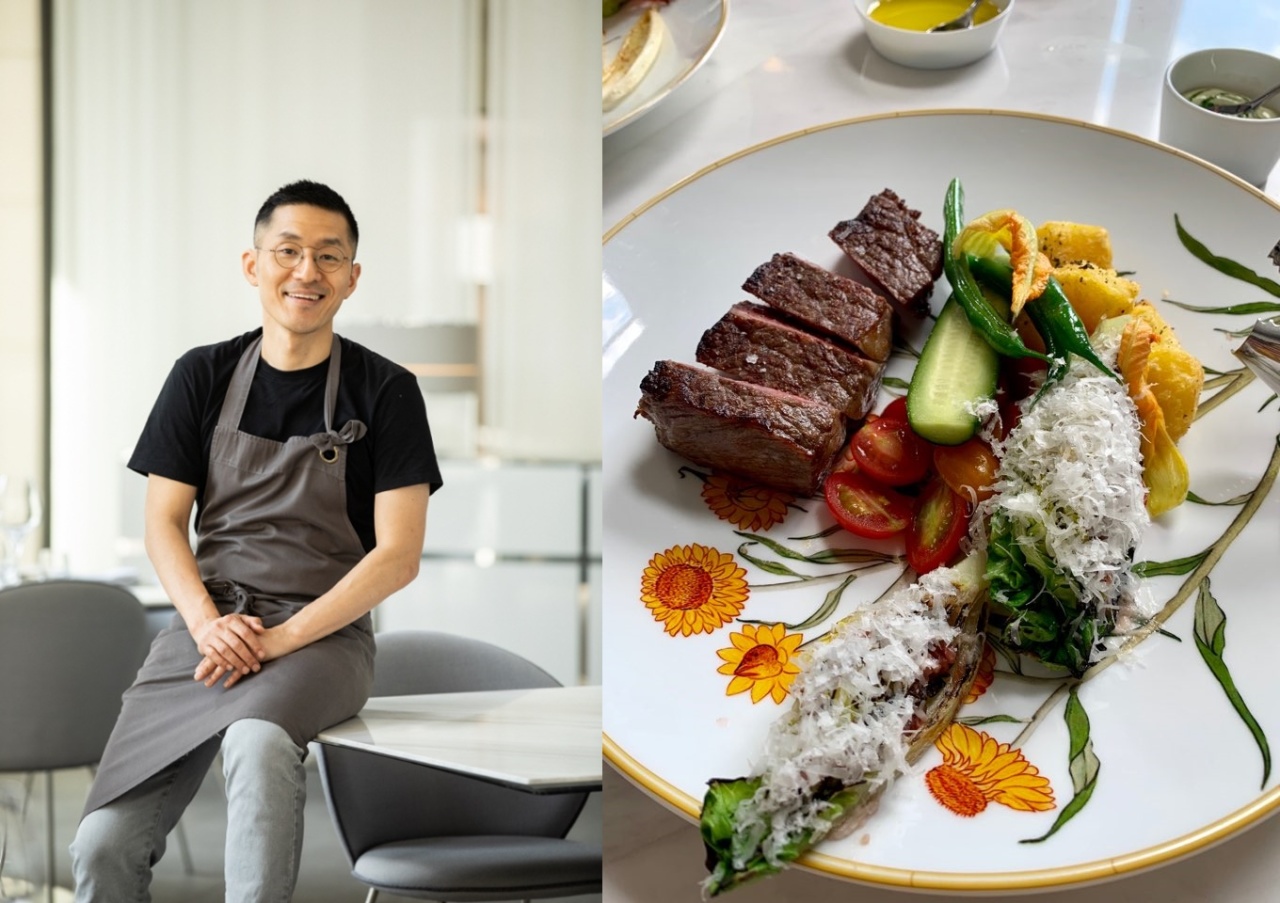With 26 restaurants boasting highly coveted Michelin stars, Seoul’s fine dining scene is definitely on the rise. Streets in posh neighborhoods of Seoul are dotted with eateries serving cuisines from around the world.
By comparison, the restaurant scene in hotels seems to have lost its luster. Up until the 2000s, hotel restaurants were where one headed here for the upscale, fine-dining experience.
But today, star chefs at independent restaurants are the trendsetters leading the fine-dining scene, with hotels seen as slow to take up new trends and adapt to changes.
Shedding their dusty, staid image, luxury hotels are now inviting celebrity chefs onto their premises, with hopes of borrowing a touch of their glamour. Chefs, meanwhile, hope to benefit from the hotels’ infrastructure.
Banyan Tree Club & Spa Seoul, for instance, recently welcomed a chef with two Michelin stars.
Festa, formerly a contemporary Korean dining restaurant, is now a comfortable European dining spot with a new name, Festa by Mingoo.
As the name hints, the restaurant is headed by star chef Kang Min-goo. Though his TV appearances have been limited compared to other celebrity chefs here, his name is known throughout the culinary scene, as he runs Mingles in Cheongdam-dong, southern Seoul, a contemporary Korean dining restaurant with two Michelin stars.
 |
Chef Kang Min-goo (Banyan Tree Club & Spa Seoul) |
At Festa by Mingoo, Kang introduces healthy European cuisine. Though Kang is recognized for his adventurous interpretation of Korean cuisine, at the hotel restaurant he serves up traditional European fare.
“Mingles is about ‘mingling contrasting elements into harmony.’ Here, it is about mingling city life with greenery, finding peace in the heart of the city,” he said.
At the new restaurant, Kang prepares healthy green dishes, created with fresh local produce. They are not as innovative as the dishes served in the Cheongdam establishment, but are satisfying dishes that stick to the basics.
At Festa by Mingoo, the signature dish is the seafood platter of fresh oysters, abalone, scallops, caviar, sea urchin and lobster. Paired with dipping sauces, the fresh dish bursts with marine flavors.
Another menu item loved for its beautiful layout is the Caesar salad. Served in a dish with a cornhusk painting, cabbage leaves are laid out to resemble a fully grown ear of corn.
“I have been running an independent restaurant for five years, but it is not easy to manage the place. My partner is the bank. I always have to borrow money. People often call Mingles a ‘fine-dining restaurant for survival,’” Kang said.
“Nowadays, there are more restaurants affiliated with large companies. Watching them, I thought it would be nice to collaborate with an established hotel with an infrastructure. The goal is to mix the advantages of an independent restaurant and a hotel,” Kang said.
A typical meal of salad, appetizer, seafood platter, steak and dessert shared by four would come to about 360,000 won ($306) at Festa by Mingoo, the restaurant said. Prices on the lunch and dinner menus are the same.
The Plaza Seoul, Autograph Collection has seen a major change this year with the opening of four new restaurants, including Dear.Wild.
Dear.Wild is a European restaurant helmed by Lee Jun, a celebrity chef famous for his Michelin-starred French- and Korean-inspired Sogine in southern Seoul.
Dear.Wild serves all-natural French dishes infused with the contemporary flair of Soigne.
 |
Chef Lee Jun (Courtesy of the chef) |
Like Kang, Lee faced many challenges running a fine dining restaurant on his own and hopes to take advantage of the luxury hotel’s infrastructure, as well as to meet different customers.
While Soigne has relatively younger customers who are interested in gastronomy, Dear.Wild expects businesspeople who are older.
“I hope to take what I learned from Soigne and adapt the experiences to Dear.Wild, and vice versa,” he said.
“Managing an individual restaurant, it is impossible to just focus on food and service. There are other aspects to consider, for example, parking. But at a hotel, I can just focus on what is happening inside the restaurant,” Lee said.
Unlike Soigne, which offers a collection of picture-perfect dishes, Dear.Wild is rougher in style. The signature dish is beef Wellington. The thick-cut meat is presented via Gueridon service, on a tableside trolley.
“You know, when you go to nice restaurants in Paris, they offer Gueridon service. It’s something classic,” he said. “Dear.Wild may not be as experimental or intricate as Soigne. For extravaganza, we have the Gueridon service.”
This is Lee’s third location, following Soigne and Doughroom, a more casual, pasta-focused restaurant. Since opening Soigne in 2013, Lee has experimented with a diversity of restaurants, with a wish to broaden the range of what he can do in the upscale culinary scene.
“Many chefs have lost direction. After working in the kitchen for years, some quit fine dining, because it is not profitable or easy. Also, some employees cannot find a place to return to after taking a few years off,” he said.
“If I become bigger in size, I might be able to offer them other jobs that do not exist in small restaurants. For example, a marketing manager. If I had just one restaurant, there would not be a position like that,” he said.
In the end, it is all about trying everything he can, the chef said. He hopes diners are willing to experience different restaurants, so they can compare the food, service and atmosphere.
“I have this dream: By running three restaurants of different styles -- a fine-dining restaurant, an upscale hotel restaurant and a casual-dining restaurant -- I will be able to work out a system, allowing experiences from one restaurant to improve the other two restaurants,” he said.
At Dear.Wild, the set-course lunch starts at 70,000 won and dinner starts at 150,000 won.
(
silverstar@heraldcorp.com)









![[Today’s K-pop] Blackpink’s Jennie, Lisa invited to Coachella as solo acts](http://res.heraldm.com/phpwas/restmb_idxmake.php?idx=644&simg=/content/image/2024/11/21/20241121050099_0.jpg)